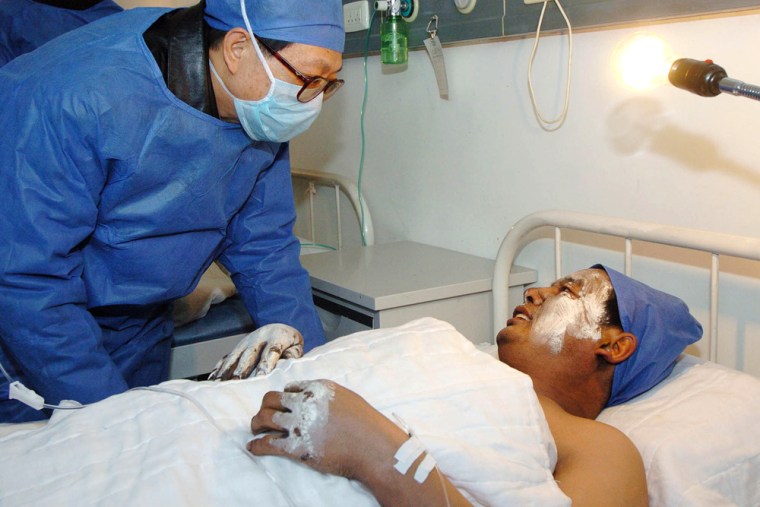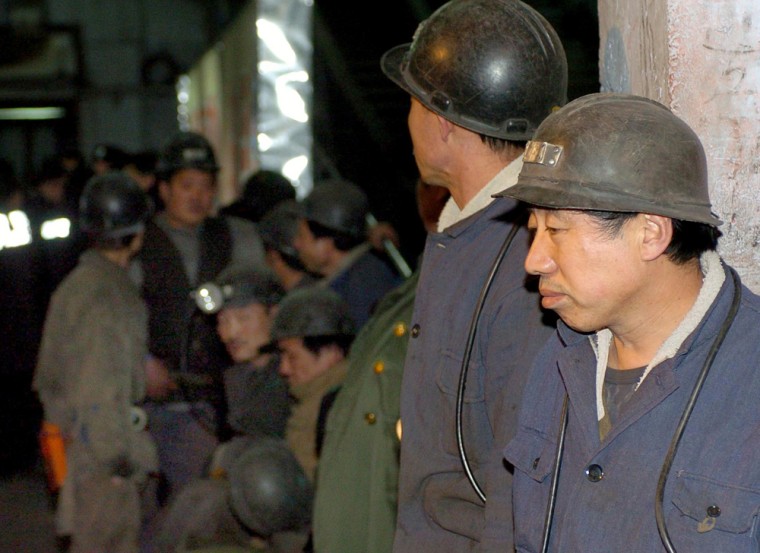Rescuers searching for miners trapped by a coal mine explosion in northeast China found six more bodies early Wednesday, bringing the death toll in the country's worst reported mining disaster in decades to 209, the government said.
Six more miners were still missing following Monday's blast in the Sunjiawan coal mine in Liaoning province, the official Xinhua News Agency reported.
Dozens of rescuers had searched through the night in subfreezing temperatures.
The cause of the blast, which occurred nearly 800 feet underground, was under investigation.
President Hu Jintao and other Chinese leaders issued orders Tuesday for local officials “to spare no effort to rescue those stranded in the mine,” Xinhua said. It said they called for “strict measures” to prevent any more such disasters.
China has suffered a string of deadly mining disasters in recent months despite a nationwide safety crackdown.
A blast in the northern province of Shaanxi in November killed 166 miners. Another explosion in October killed 148. Before that, the deadliest recent reported mining accident was a fire in southern China that killed 162 miners in 2000.
The disaster Monday was the deadliest reported by the Chinese government since the 1949 communist revolution. However, until the late 1990s, when the government began regularly announcing statistics on mining deaths, many industrial accidents were never disclosed.
In 1942, China’s northeast was the scene of the world’s deadliest coal mining disaster when an accident killed 1,549 miners in Japanese-occupied Manchuria during World War II.
The explosion at Sunjiawan happened about 10 minutes after an earthquake shook the mine, Xinhua said, citing Zhang Yunfu, vice general manager of the Fuxin mine group.
A duty officer at the provincial Safety Production Supervision Bureau said she had no details and directed queries to the department in charge of coal mines. Calls to that department and others were not answered.

An official at the Fuxin Coal Industry (Group) Company said he was too busy to comment.
China’s mines are by far the world’s deadliest, with more than 6,000 deaths last year in floods, explosions and fires.
The government said that toll was 8 percent below the number killed the previous year. But the government says China’s fatality rate per ton of coal mined is still 100 times that of the United States.
China says it accounted for 80 percent of all coal mining deaths worldwide last year.
Lack of safeguards faulted
Mine owners and local officials are frequently blamed for putting profits ahead of safety, especially as the nation’s soaring energy needs increase demand for coal.
Underground explosions often are blamed on lack of ventilation equipment to clear gas that seeps from the coal bed.
The Chinese government says it has budgeted some $500 million since 2000 to improve ventilation in mines and reduce other safety hazards.
The Sunjiawan mine in the Fuxin region has an annual production capacity of 1.5 million tons, Xinhua said.
Fuxin is one of China’s oldest coal mining regions, and many of its mines have already been depleted, according to state media reports. Miners in many such regions must tunnel far underground to reach coal seams, and the risk of explosion due to methane gas is high.
